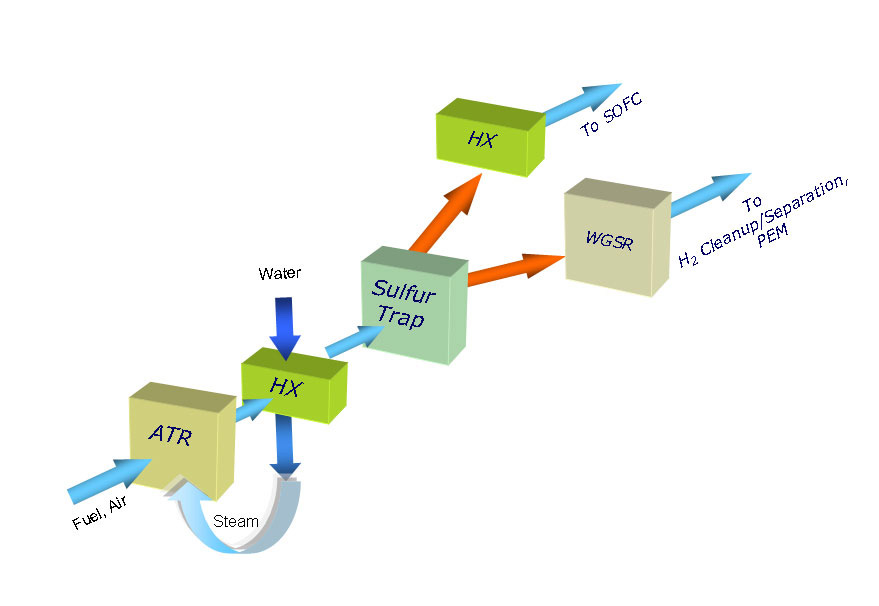SOFC Fuel Processor
"We put the fuel in fuel cells®"
PCI has developed an ultra-compact fuel processor for solid oxide fuel cell systems. Current work with the Diesel and JP-8 fuel reformer has shown that autothermal reforming (ATR) is the best choice of technology to maintain a balance among size, weight, performance, durability, sulfur tolerance and total cost.
 As shown in the diagram, water, fuel and air are fed to the fuel processor. The ATR is started with cold fuel and air and operated in CPOX mode until steam is generated within the reformer. It is then transitioned to ATR mode (<10 mins). After reforming, the sulfur is removed by passing through a sulfur trap. The reformate exiting the fuel processor has <1 ppm sulfur.
As shown in the diagram, water, fuel and air are fed to the fuel processor. The ATR is started with cold fuel and air and operated in CPOX mode until steam is generated within the reformer. It is then transitioned to ATR mode (<10 mins). After reforming, the sulfur is removed by passing through a sulfur trap. The reformate exiting the fuel processor has <1 ppm sulfur.
Additional components such as pumps and controller are separately packaged. A control algorithm is implemented for safe startup, operation and shutdown. The result is a readily manageable, portable and compact package. A photo of the nominal 2 kWe fuel processor, which has a volume of ~3 liters is shown.
Additional components such as pumps and controller are separately packaged and are controlled. The result is a manageable, portable and compact package. A photo of the nominal 2 kWe fuel processor, which has a volume under 3 liters is shown.
Attributes (2-5 kWe)
| Characteristic | PCI Reformer Status |
| System Net Rated Power (kWe) | 2-5 |
| Energy Efficiency (LHV H2+CO basis) | 80 – 85% (fuel quality dependent) |
| Power Density (We/L) | ~600 |
| Specific Power (We/kg) | ~600 |
| Start-up(Cold Start) | <0.5 minutes to light off; ~7 min to steady state |
| Transient Response | <2 sec |
| Thermal Cycles | 1000ºC/min;500 cycles |
| Lifetime (w/o replacement) | 1100 hours demonstrated; projected to be 5000–8000 |
| Maximum H2S in product stream | <1 ppm (from 400 ppm Sulfur in fuel) |
| Turn Down Ratio | 5:1 |
| Acoustic Signature (dBA @ 1m) | <50 |
Contact PCI to learn more about how our solutions may be adapted for your needs.
